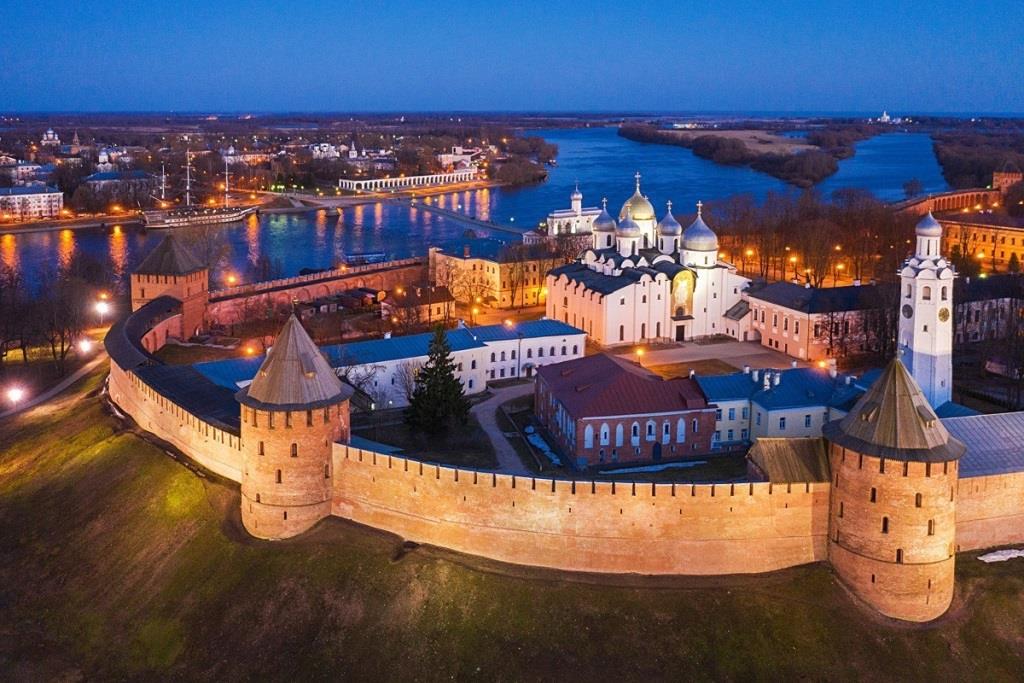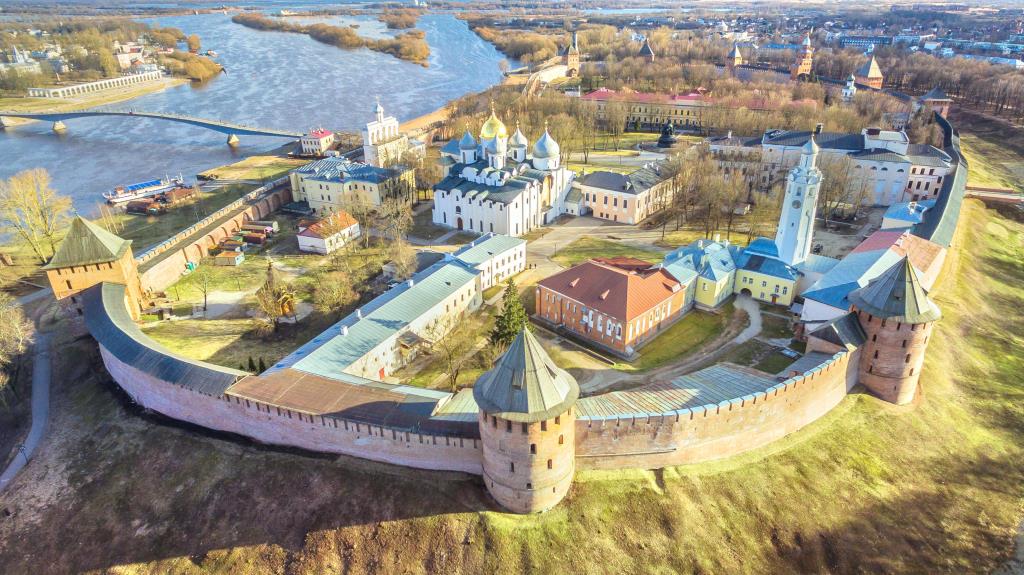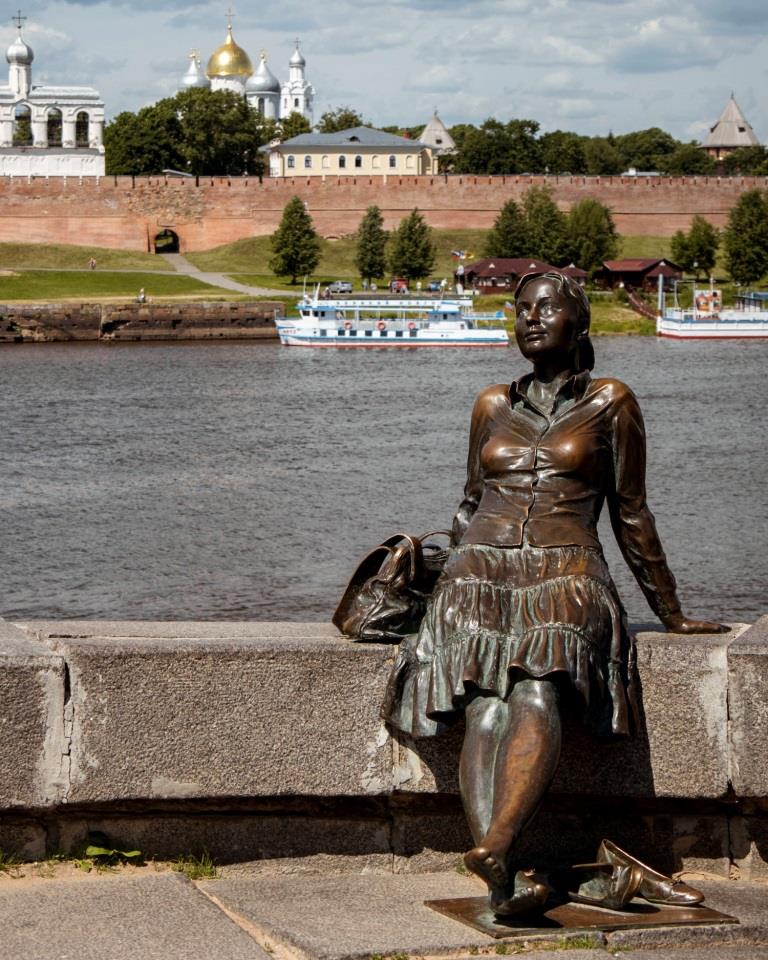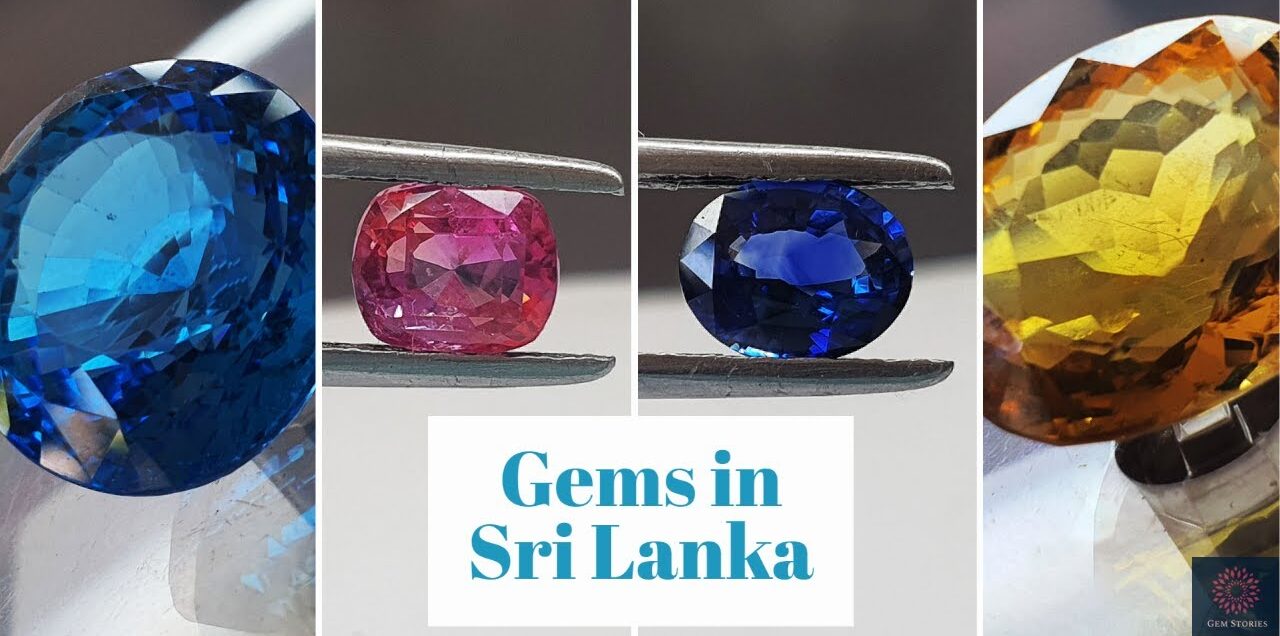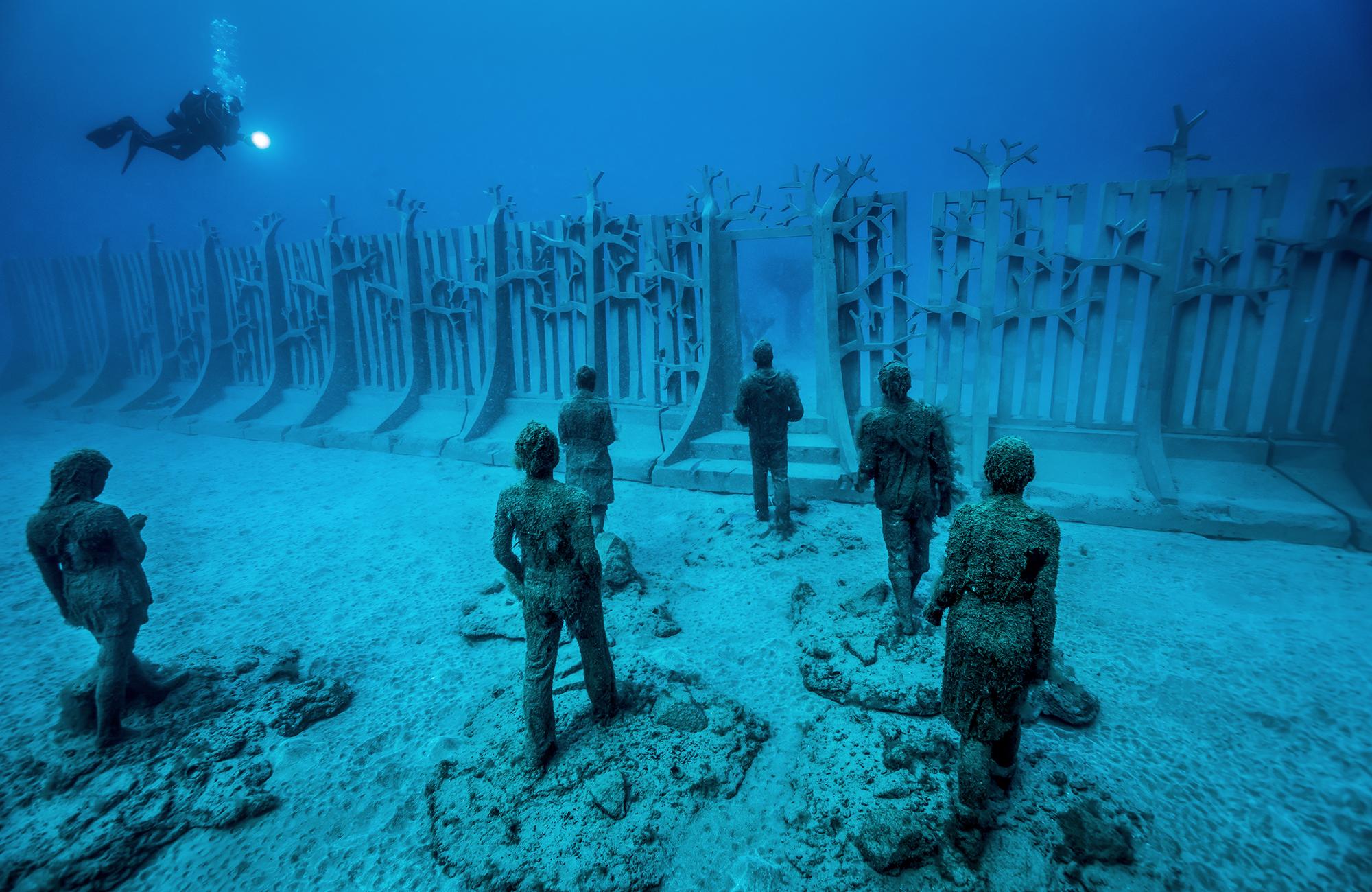Veliky Novgorod is one of the oldest Russian cities (first mentioned in the 9th century), which flourished due to its location on the ancient trade route that connected Northern Europe with Byzantium and Persia. The old part of the city, well preserved to this day, is located on both banks of the Volkhov River flowing here. On the left bank there is the so-called Sophia side – with the Kremlin (it is called “Detinets”) and the Sophia Cathedral, and on the right – the Torgovaya side with Yaroslavov Dvor, Torgovy and Gostiny Dvors.
The World Heritage Site includes 37 individual monuments and entire ensembles, as well as the archaeological cultural layer of the 10th-17th centuries. on an area of about 350 hectares. Nowadays, the Novgorod Kremlin and other valuable monuments are part of the famous museum-reserve, which was organized in 1925. on the basis of one of the most ancient museums in Russia, founded in 1865. The Novgorod State United Museum-Reserve is famous not only for its architecture, but also for its rich collections of ancient icons, arts and crafts, and treasures of the Faceted Chamber.
Veliky Novgorod is one of the oldest Russian cities (first mentioned in the 9th century), which flourished due to its location on the ancient trade route that connected Northern Europe with Byzantium and Persia. The old part of the city, well preserved to this day, is located on both banks of the Volkhov River flowing here. On the left bank there is the so-called Sophia side – with the Kremlin (it is called “Detinets”) and the Sophia Cathedral, and on the right – the Torgovaya side with Yaroslavov Dvor, Torgovy and Gostiny Dvors. The World Heritage Site includes 37 individual monuments and entire ensembles, as well as the archaeological cultural layer of the 10th-17th centuries. on an area of about 350 hectares. Nowadays, the Novgorod Kremlin and other valuable monuments are part of the famous museum-reserve, which was organized in 1925. on the basis of one of the most ancient museums in Russia, founded in 1865. The Novgorod State United Museum-Reserve is famous not only for its architecture, but also for its rich collections of ancient icons, arts and crafts, and treasures of the Faceted Chamber.
Located on the ancient trade route between Central Asia and Northern Europe, Novgorod was the first capital of Russia in the 9th century. Surrounded by churches and monasteries, it was a center of Orthodox spirituality as well as Russian architecture. Its medieval monuments and 14th-century frescoes by Theophanes the Greek (Andrei Rublev’s teacher) show the development of its remarkable architectural and cultural creativity.
The city of Novgorod, the earliest documentary reference to which dates from the 9th century, is located on trade routes connecting the Baltic and Scandinavian countries of Northern Europe to Central Asia and Byzantium.
A serial estate, the Historical Monuments of Novgorod and its surroundings are directly related to the process of the establishment of the Old Russian state in the 9th–10th centuries. The urban aristocracy that governed the city-republic through the People’s Assembly (Ves) invited a prince from the Swedish (Varangian) dynasty of the Rurikids to rule the Russian lands for the entire 700 years.
Due to the care of its Orthodox archbishop, Novgorod was one of the oldest and most important centers of Russian art and, more generally, of Russian culture. The earliest Russian Old Church Slavonic manuscripts (11th century) were written in Novgorod, Including an autonomous historiography (early 12th century) and, in particular, the first complete translation into Slavonic of the Old and New Testaments (late 15th century). Novgorod was the birthplace of the national style of stone architecture, and one of the oldest national schools of painting.
Most of the historical monuments are associated with the Novgorod Republic (12th-15th centuries), which in itself was a unique phenomenon of medieval Russia. It was only after the conquest of the two republics (1478, in the case of Novgorod) by the Muscovite rulers that the present Russian capital achieved cultural supremacy.
Historical monuments of Novgorod are located not only in the city center, but also in some outlying areas. In Novgorod itself, is the district of St. Sophia, which includes the Kremlin, whose 15th-century fortifications have been reinforced in the 17th century; Church of St. Sophia from the mid-11th century; and other monuments from the 12th to 19th centuries. There are monuments in the commercial district, including many of the oldest churches in the city, Such as the Church of the Transfiguration, was decorated in the late 14th century with frescoes by Theophanes the Greek, who was Andrei Rublev’s teacher. Outside the old town there are also four religious monuments from the 12th and 13th centuries, including the famous Savior Church on Nereditsa.
The outstanding archaeological and cultural layers of Novgorod of the 10th-17th centuries occupy an area of about 347 hectares with a depth of 7-8 meters and are waterlogged and anaerobic, thus preserving organic matter.
More About World Heritage Sites
- Madriu Perafita Claror Valley, Andorra
- Bamiyan Valley : Cultural & Archaeological Remains
- Minaret of Jam, Afghanistan : The Discovery And Facts
- Sinharaja Rain Forest Sri Lanka : Biodiversity Hotspot
Frequently Asked Questions About Veliky Novgorod
Q. What is Veliky Novgorod known for?
A – The city is known for the diversity and age of its medieval monuments. The most prominent of these is St. Sophia’s Cathedral, built between 1045 and 1050 under the patronage of Vladimir Yaroslavich, son of Yaroslav the Wise; Vladimir and his mother, Anna Porphyrogenita, are buried in the cathedral.
Q. Is Veliky Novgorod worth visiting?
A – Novgorod is also recognized as a UNESCO World Heritage Site. Veliky Novgorod is a small and very picturesque town that is worth visiting, especially if you are interested in history and old Russian traditions.
Q. Why is Novgorod an important Russian city?
A – In the middle centuries Novgorod was considered the second main city in Ancient Russia after Kiev. Novgorod was the main Russian port for many centuries and was important to the Baltic maritime trade, so the city participated in the Hansa Federation (the union of the richest Baltic ports).
Q. Was Novgorod founded by Vikings?
A – In the 9th century, Novgorod was a thriving trading settlement along a major Varangian (medieval term for Viking) trade route between Scandinavia and Greece. To establish order, the Novgorodians invited the then powerful Varangian chief Prince Rurik to establish a fair and just government.
Q. What does the name Novgorod mean?
A – (Russian nɔvɡərət) noun. A city in NW Russia, on the Volkhov River; became a principality under Rurik in 862, an event regarded as the founding of the Russian state; a major trading center in the Middle Ages; Destroyed by Ivan the Terrible in 1570.
Q. How old is Novgorod?
A – Novgorod emerged as one of the earliest centers of exploitation of the forest interior in the 9th century and remains the most important commercial center of the Kievan period.






